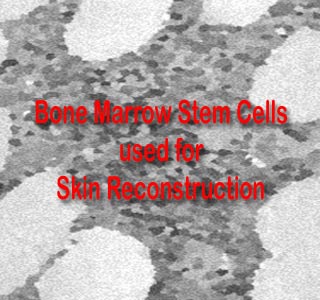
The study investigators set up a burn wound model with pig skin. This type of skin is said to be anatomically and physiologically akin to the human skin. This model was used to get a deeper understanding of the process of mending burn wounds with the help of artificially constructed skin through bone marrow stem cells.
The skin is said to be the largest organ of a human’s body. This organ shields the body from physical damage, disease and also maintains the body temperature. Skin degeneration through burns or diseases supposedly cannot repair it self immediately. Thus it is noticed that many burn suffered victims succumb to their injuries, due to infections and loss of plasma. It is stated that this was the reason due to which skin grafts came into existence, to curb such deaths.
In order to reconstruct an artificial skin with bone marrow stem cells and natural materials, certain biomedical theories and engineering technologies were used. After the placement of the artificial skin on the patient and the commencement of dermal layer regeneration, the stem cells apparently transform into skin cells.
It is stated that these cells have the ability to renew themselves. Thus they provide a more enhanced healing outcome in the wound healing therapy. These cells, on being implanted on a burn wound, revealed a reduced amount of wound contraction, better healing capabilities, and an improved blood vessels development.
Lead author, Yan Jin of the Fourth Military Medical University, hopes that their invention may be helpful in plastic and metal prostheses, as well.
Their findings are published in the Artificial Organs, an official journal of the International Federation for Artificial Organs (IFAO), The International Faculty for Artificial Organs (INFA), and The International Society for Rotary Blood Pumps (ISRBP).
